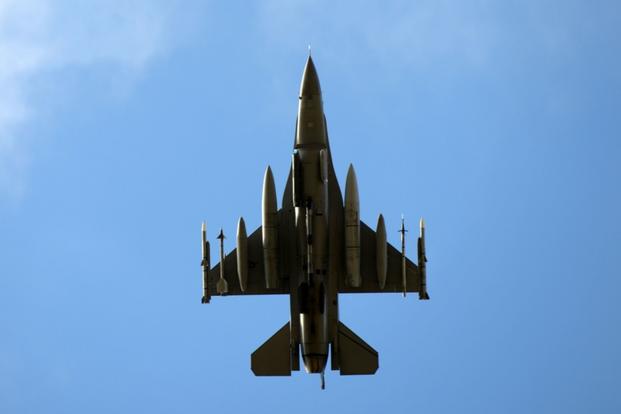Missing parts caused an engine failure that resulted in an F-16C crashing earlier this year near Washington, D.C., the Air Force concluded.
The pilot safely ejected and wasn't injured in the April 5 accident, which occurred at 9:17 a.m. local time several miles southwest of Joint Base Andrews, Md., in a wooded area in the town of Clinton. But the $22 million single-engine fighter was destroyed.
Investigators identified the cause of the crash as "improper assembly of the main engine control," according to a press release from the service's Air Combat Command, which summarized results of an Accident Investigation Board report.
Related content:
- Air National Guard F-16 Crashes Near Washington, DC
- Air Force Working Through Implementation of Trump's Pilot Recall Order
- Air Force's F-16 'Wild Weasels' Hunt Missile Sites, Destroy Them
The investigation doesn't implicate plane-maker Lockheed Martin Corp. or engine-maker General Electric; rather, it cites work performed by the 552nd Commodities Maintenance Squadron, based at Tinker Air Force Base, Okla., as "a substantially contributing factor" in the crash.
"A preponderance of evidence showed that the main engine control was missing a required 600-degree retaining ring and the anti-rotation pin," the release states. "The misassembled differential pressure pilot valve caused the main engine control to incorrectly meter abnormally high fuel flow to the engine. This led to severe engine overspeed, severe engine over-temperature, engine fire, and, ultimately, a catastrophic engine failure."
A spokeswoman for the command didn't immediately say whether the maintenance of the aircraft was performed by service personnel or contractors. The report describes the unit as "a DOD contracted entity."
This image shows pilot descending on parachute and black smoke rising from crash @ABC7News pic.twitter.com/2bKLWrCKmh
— Brad Bell (@ABC7Brad) April 5, 2017
Moments before the crash, the pilot from the Air National Guard's 113th Wing, 121st Fighter Squadron, was flying in a four-plane formation as part of a basic surface attack training mission from Joint Base Andrews, the release states. Shortly after takeoff, the plane experienced engine acceleration followed by a loss of thrust, it states.
The pilot reacted quickly and properly -- he extinguished the engine fire by switching the throttle to cut-off and jettisoned the external wing fuel tanks to decrease weight and glide distance but, after realizing the nearest recovery airfield was too far away, he directed the aircraft to a nearby open field and ejected, according to the release.
In video shared on social media, the pilot can be seen parachuting to the ground. He was treated for minor injuries and released from the hospital.
A portion of the aircraft -- one of the external fuel tanks -- went down about 200 yards behind a subdivision of homes, startling residents who witnessed a fireball and cloud of smoke.
-- Oriana Pawlyk contributed to this report.
-- Brendan McGarry can be reached at brendan.mcgarry@military.com. Follow him on Twitter at @Brendan_McGarry.



























